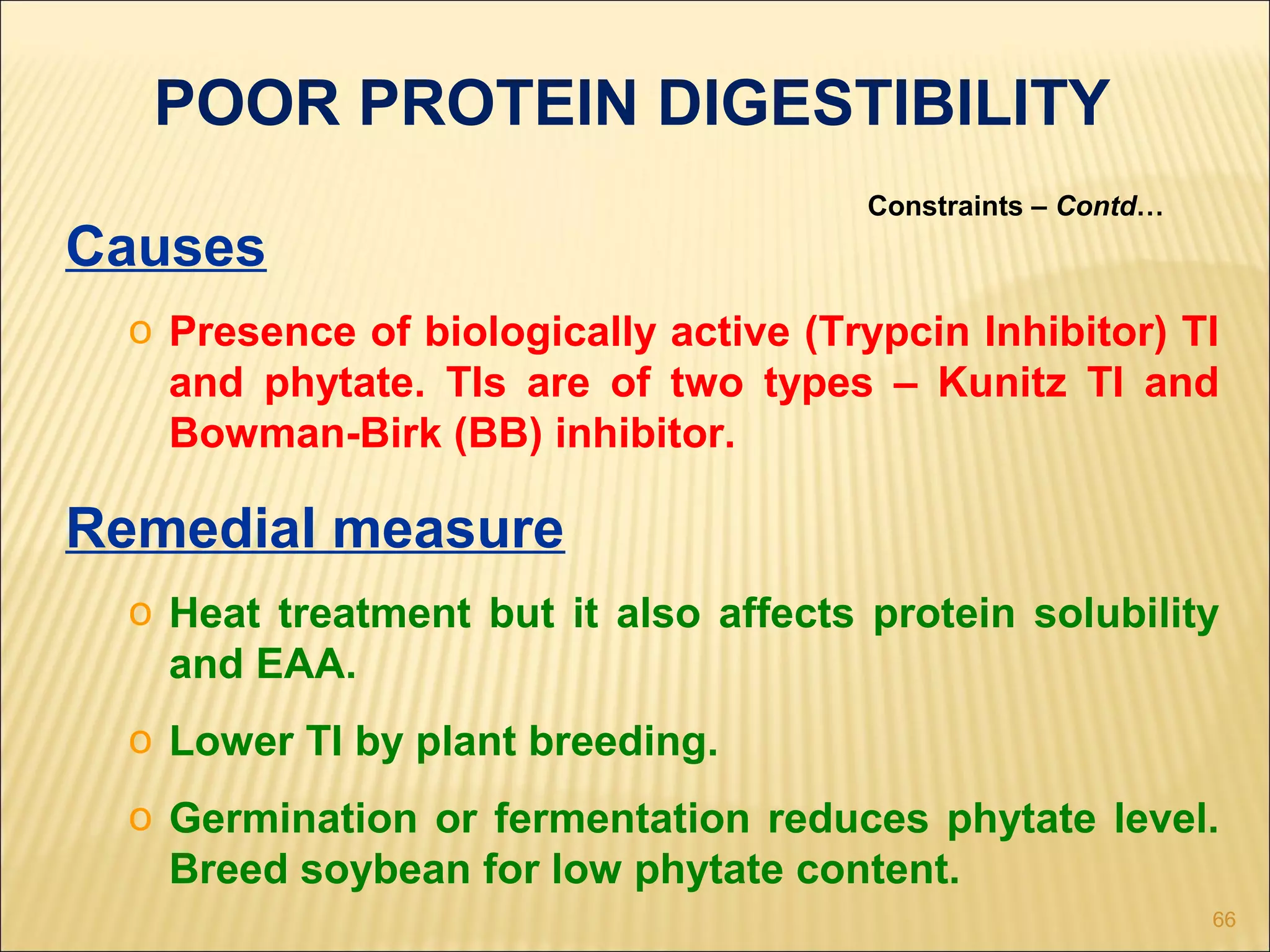This document provides information on the history, classification, botany, and domestication of soybeans. It discusses:
- The naming and classification of soybeans over time by various scientists from 1861 to 1917.
- The scientific classification of soybeans in the plant kingdom.
- The domestication of soybeans originating in China and their spread to other parts of Asia, Europe, and America over centuries.
- The morphological characteristics, plant structure, growth habits, and other botanical details of soybeans and their wild relatives.
- The introduction and development of soybeans in India promoted by figures like Mahatma Gandhi and research institutions.
- The genetic relationships and gene pools between cultivated and wild soybean




















































































































































































